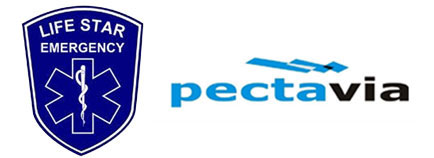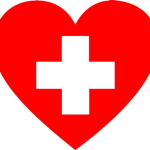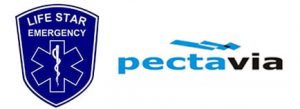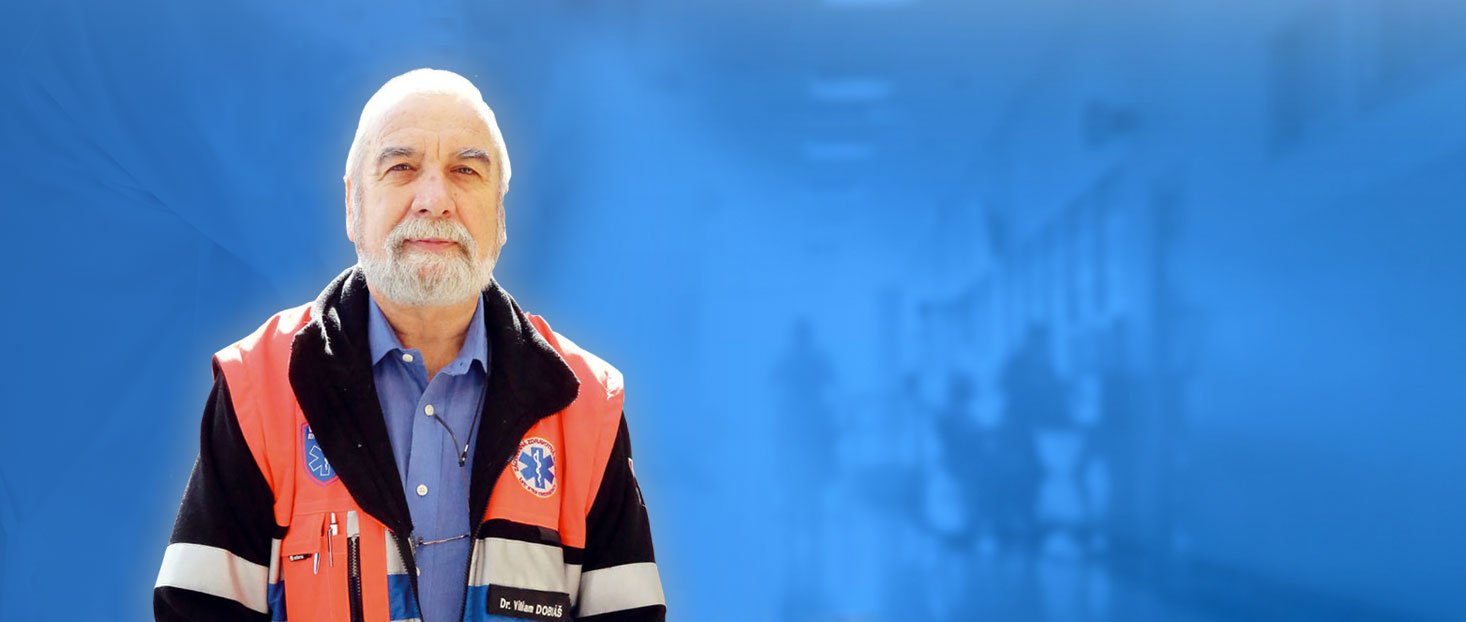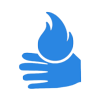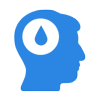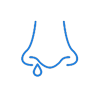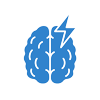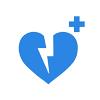The procedure of providing first aid
lifesaver must
- assess the situation without endangering their health and life
- detect signs of injury or illness
- provide urgent first aid
- call specialist help and deliver victim into the hands of health care workers with the same or higher qualification
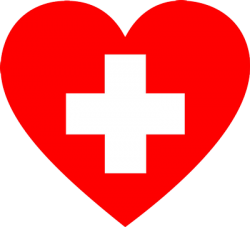
The recommended position for the injured
recovery position
Supine
shock position
Basic first aid
First aid is easy if, if I want to help. It is therefore not a question of large knowledge, But good will.
The procedure for first aid for shock
- conveniently store, actively soothe
- treat wounds
- defend hypothermia by covering
- lift legs about 30 cm, (= autotransfusion shock position)
- summon professional help
- control consciousness and breathing (If the victim can tell he is conscious and breathing)
warning:
Do not administer fluids. The shock position not to put in the unconscious, chest injury, cardiac and respiratory problems.The procedure of providing first aid for burns
- pain on contact with a hot body, or liquid
- erythema
- the appearance of blisters
- at the burn more than hand the possibility of shock
- immediately cool with cold water 20 me
- when it stops hurting after stopping the cooling cover dressing, clean cloth, or plastic bag
- anti-shock measures
- arrange transport to definitive treatment
warning:
Cold tap water is cold enough to stop the spread of burn depth and breadth. The sooner after cooling starts to take off rings and pendants.The procedure of providing first aid for hypothermia
- first save it to dry
- Netra snow are not leaving slowly warm in the cold room
- quick overall heating, culminating preferably warm bath
- if the person is conscious, serve hot beverages
warning:
Conventional thermometers are scale only to 34 DEG C. does not reveal the hypothermia.The procedure of providing first aid in fibril spasms - spasms of temperature
- spasmodic condition associated with various forms of disorders of consciousness
- They occur only in children aged from 5 months to 6 years of disease onset of melting and within the first days febrile illness.
- Not dangerous, Only parents are usually in a panic.
- They occur in about 5% children, the family may be the first two children without seizures, and in the third they appear at a first temperature in the life
More in the book V. Dobiáš, B. Podhoranský:
How lose her baby
Educational video:
With the consent Baštrng Michal Kubovčík
The procedure of providing first aid in hypoglycaemia
Hypoglycemia - low blood sugar: brain cells need oxygen to work, and sugar. Both components are normally in the blood. Without oxygen, brain cells cease to function for a few minutes, without sugar for a few tens of minutes. Hepatic first apparent unconsciousness, which is treatable by administration of sugar.
subjective symptoms
Affected must be diabetic - diabetics. Symptoms that feels affected: hunger, nervousness, weakness, lapses in concentration, blurred vision.
objective symptoms
Behavioral disorders from anxiety and restlessness to symptoms verbal and physical aggression towards people and things, bledosť, perspiration, aimlessly deal. Sometimes there are warning signs bland and last for a very short time, so that the first manifestation of the unconscious. Often it precedes symptoms of hypoglycaemia missed meals for various reasons…
Basic First Aid
For diabetics to produce unusual behavior immediately lodge 2-3 cubes or 2-3 teaspoons granulated sugar, candies (Skittles, Ments p.), fruit juice 3-4 dl, sweetened beverage, possibly 4 teaspoons honey, a piece of chocolate. Be reckoned with by refusing aid to the aggressive reaction. If unconscious place in recovery position and call the emergency number. The quantity of sugar referred to as first aid is sufficient to restore adequate blood sugar.
Enhanced emergency
When the victim aggressive and refuses to help, but it is still conscious…..
More in the book V. Dobiáš:
5P-emergency advanced providers
Educational video:
With the consent Baštrng Michal Kubovčík
The procedure of providing first aid at a stroke
Stroke (synonyms stroke, apoplexy, cerebral infarction, stroke) is an acute nontraumatic conditions caused by impaired blood flow through the brain. Manifested by impaired brain function - awareness, sensitivity, mobility and speech impaired. It's actually similar to cerebral infarction heart attack.
Stroke occurs in two main ways: 1. occlusion of the vessel by a blood clot and slow or stop the blood flow to the brain and the chamber 2. rupture of blood vessels in the brain, followed by bleeding in the brain tissue, when blood flowing mechanically damages brain cells. Treatment with clot dissolving under certain circumstances may a promising.
The main risk is delay effective treatment, because hypohemia usually occurs at night and sleep, thereby dissolving clots should start no later than 4 hours of the onset of the symptoms. In vascular stroke caused by bleeding is a major risk of poorly maintained high blood pressure. Vascular events are the third leading cause of death after heart disease and cancer, half of the patients die within 3 months after the establishment, almost half remains crippled. The number of vascular events of bleeding is reduced by better treatment of hypertension and prevention, the number of episodes of loss of blood supply (ischemických) will rise with the aging population. Nevertheless, a third of stroke resulting in patients under 65 years.
Recognition:
sudden onset of speech disorders, asymmetry in the face, numbness and mobility of the limbs of one side of the body. Record the exact time of onset.
First aid:
call the emergency line 155, tranquilize, stored in a horizontal position with raised head, DRINK fLUIDS. Dentures only choose if released. If unconscious recovery position.
Explanatory notes:
- Stroke is a common disease with sudden significant mortality and disability reasons. At first appearance, it is possible to establish a diagnosis and a simple examination in pre-conditions. Proper management of the patient from diagnosis by family / colleagues, through rapid transport to a specialized facility for expanding treatment options (dissolve the blood clot) can reduce high mortality, disability and social dependence.
- annually give about Slovakia 350 new vascular events to 100 000 residents, What is 2-3 times more than in developed European countries.
- Rescue expresses only prerequisite for graduation effective treatment dissolving the blood clot, the elimination of the last word of bleeding by CT and the neurologist by evaluating an affected.
- cure without consequences can be when initiating therapy in 3-4,5 hours of onset of symptoms, v Intervale 4,5-6 hours of treatment is less efficient or impossible, po 12 hours we treat have only incidental complications.
More in the book V. Dobiáš:
5P-emergency advanced providers
teaching video:
The procedure of providing first aid for choking food
Adults:
Obstruction of the airway foreign body is rare, but potentially treatable cause of sudden death. Since most events are associated with eating, become in the presence of witnesses. It is an opportunity for immediate action if the victim still conscious.
Recognizing this event is crucial for timely first aid to a successful recovery, It is important not to confuse this sudden episode of sudden loss of consciousness in other states.
There is a meal. Typical situations in adults: party where almost at the same time, talks, laughs, drink.
Recognition: person is conscious, while eating suddenly stops talking, not breathe, Avoid couching, catches the throat.
More in the book V. Dobiáš:
5P-emergency advanced providers
teaching video:
children to 1 year:
The details in the book. Dobiáš, B. Podhoranský:
How lose her baby
teaching video:
The procedure of providing first aid for heart attacks
Myocardium infarction is a life threatening disease, in which the result of atherosclerosis, coronary-coronary heart (nourish the heart muscle) will start at one point of blood clots. It causes narrowing and blockage of blood vessels. Reduced to stop the blood flow to a certain limited part of the heart and the death of muscle fibers begin several hours after the irreversible change. Delaying aid and summoning medical assistance definitive results in increased bearing devitalized heart muscle, harder lasting consequences but also an increased risk of sudden death. Slovakia created about a year 10 000 infarktov, the average age of the dead from a heart attack is 53 years.
Professional diagnosis of heart attack consists of an interview with the affected (anamnesis), ECG and cardiac enzymes in blood cells. Relatively reliable diagnosis dispenses without blood tests with equivocal findings on ECG. Lay diagnosis consists of 2 symptoms, which are most often. When a heart attack is described a number of other different symptoms, but it often leads to postponement of calls to emergency services if they are not present several symptoms at once.
The first of the main symptoms are pain, pressure, burning or tightness in the middle of the chest behind the breastbone (different patients the discomfort interpreted differently). The second symptom is the duration of these difficulties more than 10 minutes without interruption. Based on these two facts can express layman suspected heart attack.
Recognition:
pain / burning / tightness / pressure in the sternum if it takes longer than 10-15 minutes without interruption.
First Aid in Brief:
call the emergency number, sit comfortably, melt, submit Anopyrin / Aspirin / aspirin - chew in your mouth for dust, drink of water. Be prepared for the animation of chest compressions and rescue breathing. All the time to be prepared for resuscitation at sudden cessation of blood circulation.
More in the book V. Dobiáš:
5P-emergency advanced providers
teaching video:
The procedure of providing first aid for unconsciousness
definition
Unconsciousness is the loss of body's ability to respond to external stimuli (sound, contact, pain) result of malfunction of the brain. It is ranked fourth out of five life-threatening events (to stop the blood flow, breathing and external bleeding) regardless of the cause, or disease, which induced unconsciousness. Unconsciousness itself may not be life threatening (and sleep is an easy form of unconsciousness), Dangerous complications are accompanying.
Diagnostika
The most frequent causes unconsciousness by frequency is drunkenness (alcohol intoxication), seizure with convulsions and unconsciousness, head injuries, collapse-mdloba, complications of diabetes, stroke, febrile convulsions children, poisoning of medicines and drugs, of course, stop the blood flow.
Diagnostics at a glance:
No reaction to reach out and shake, breathing normally, but it may be difficult or absent. Tilt your head after (A clear airway) breathing is.
Basic First Aid
- detect breathing (in addition to the findings of consciousness),
- maintaining breathing save the recovery position (if in unconscious not breathing, begin cardiopulmonary resuscitation),
- defend hypothermia,
- call specialist help
- monitor the presence of depression and possible changes of consciousness,
- find and secure vomit, packages of drugs, bottles with beverages and suspicious chemicals, in case of accident mechanism fault of another person call the police emergency line through 112, 155 (and suspected)
More in the book V. Dobiáš:
5P-emergency advanced providers, Publishing Dixit, 2017
To save the recovery position of nontraumatic coma. instructional video::
The procedure of providing first aid for animal bites
- the superficial wounds with low or no bleeding several minutes, washed with soap and water
- If in doubt, seek medical attention
- in major bleeding wounds to stop the bleeding pressure on the wound and pressure dressing and arrange transport to hospital
Note:
Avoid contact with unknown animals (domestic and wild), that behave krotko. When see bites owner, notify the police and seek medical advice (decide on vaccination against tetanus and rabies). Man bites may also require treatment.The procedure of providing first aid for snake bites
- first aid we provide IMMEDIATELY
- about 10 cm above the bitten place we're gonna tie a tourniquet, not too rigidly, that was palpable pulse
- as soon as possible and the strongest push the blood from the wounds - both wounds
- We save the affected limb as low as possible and afflicted with it must move
- We disinfect wounds and obviažeme
- provide transport to a medical facility
The procedure of providing first aid for external bleeding
- any bleeding stops Press, and the hand or under pressure (fingers) or by a pressure bandage directly on the bleeding site
- the limbs and the head will suffice ordinary pressure bandage
- on the chest, belly, neck and groin bleeding hands and place press it through a sufficiently thick layer of sterile gauze. If it's not, use a clean handkerchief, shirts etc.. in extreme cases, the right hand.
- quick and gentle transport to hospital, the transport of anti-shock measures
The procedure of providing first aid for internal bleeding
- fast and qualified transport to hospital
We never give anything to eat or drink
- if necessary, the possibility of using artificial respiration
The procedure of providing first aid for bleeding from the nose
- sit with his head bent over
- loosen clothing around the neck
- breathe through the mouth and push the soft part of the nose at least 10 me
- nesmrkať, coughed, Do not swallow - let the blood flow out of the nose
- stay in peace and without too much effort 4h after stopping
Note:
Doctor look if bleeding does not stop to 30 minutes. The whole process must be continuous, if necessary and in children can help the other person. Cold compresses are only theoretical and instrumental importance.The procedure of providing first aid in case of overheating and heat stroke
Overheating and thermal heat stroke is a disease occurring mostly in areas with higher temperature and it is possible to prevent it. Worst forms - heat exhaustion and heat stroke heat addition to the heat caused by the lack of body fluids, loss of salts and failure of thermal equilibrium.
overheating
It arises when the body is not sufficient to cool the extreme environmental conditions and the increased production of heat in the body. If a failure occurs auto maintenance
body temperature comes to the formation of heat heatstroke.
Thermal heat stroke is usually accompanied by major organ failure and impaired brain.
heat sunburn
We divide the exercise stress (young healthy people as a consequence of extremely increased or prolonged physical effort) or classic (more common in the elderly and sick people, or people exposed to high external temperatures).
symptoms
overheating
- nonspecific symptoms, may resemble febrile illness – flu
- fatigue and weakness
- nausea, sickness
- headaches and muscle
- dizziness
- muscle spasms and pain
- irritability
- changes in blood pressure and pulse rate in status (after sitting and lying down)
- temperature to 41 °C
heat sunburn
- any of the symptoms of heat exhaustion
- are characteristic disorders of consciousness with abrupt onset 80 % patients
- bizarre behavior, hallucinations, mental status changes, confusion, dezorientácia,unconsciousness
- Sweating is usually present, even stop sweating is characteristic of thermal heat stroke, but mainly as a late symptom. Dry skin is present in half of the patients, Typically, the over-exertion of heatstroke.
First aid – treatment
- transfer the victim to a cold environment,
- stored in a lying or semi-recumbent position, be physical or mental rest,
- start cooling by any means
- combat with warm water and to accelerate the evaporation fanning. Cold water is not
suitable, slowing down the skin producing heat radiation. - put bags of ice wrapped in a towel to the neck, in armpits and groin.
- cover the victim with a damp canvas.
- The administration hypotonic neprichutenú sweetened mineral water-diluted with tap water 1:1
after sips in an amount, that urine was only slightly yellow in color and is odorless. Darker urine is indicative of a lack of fluids. Liquid administered to the, in order not to upset. - If the problems abate over 30 minutes, consult a doctor, or health operations center,
- when confusion, or unconscious call emergency services.

